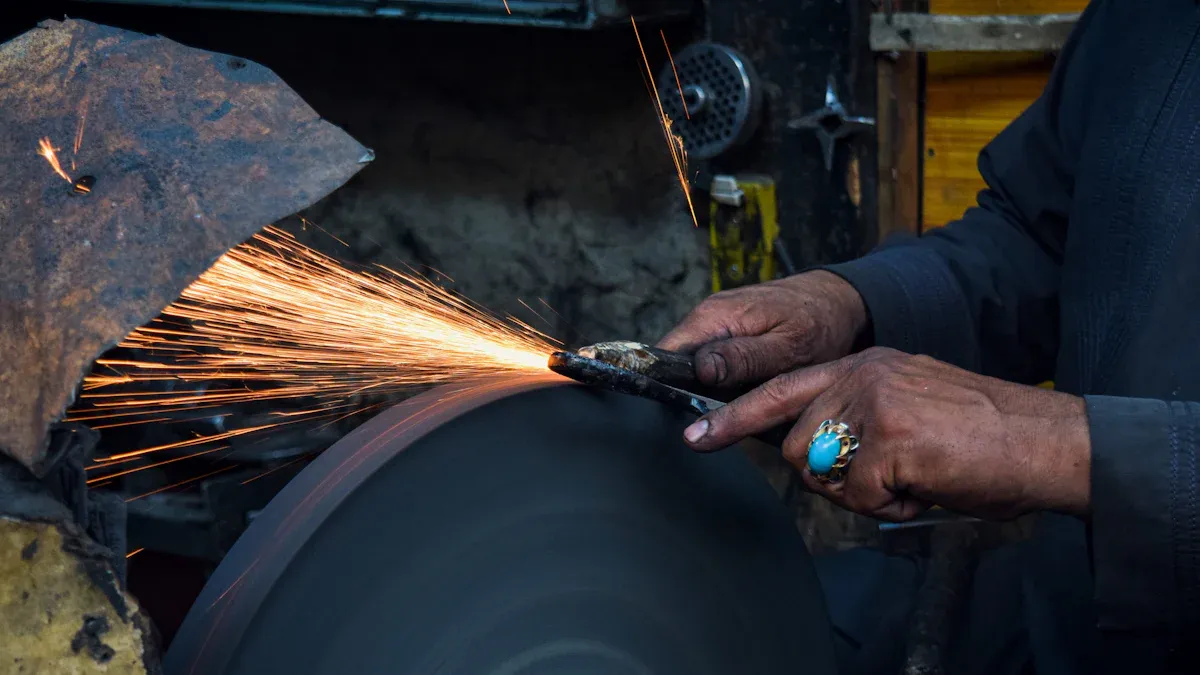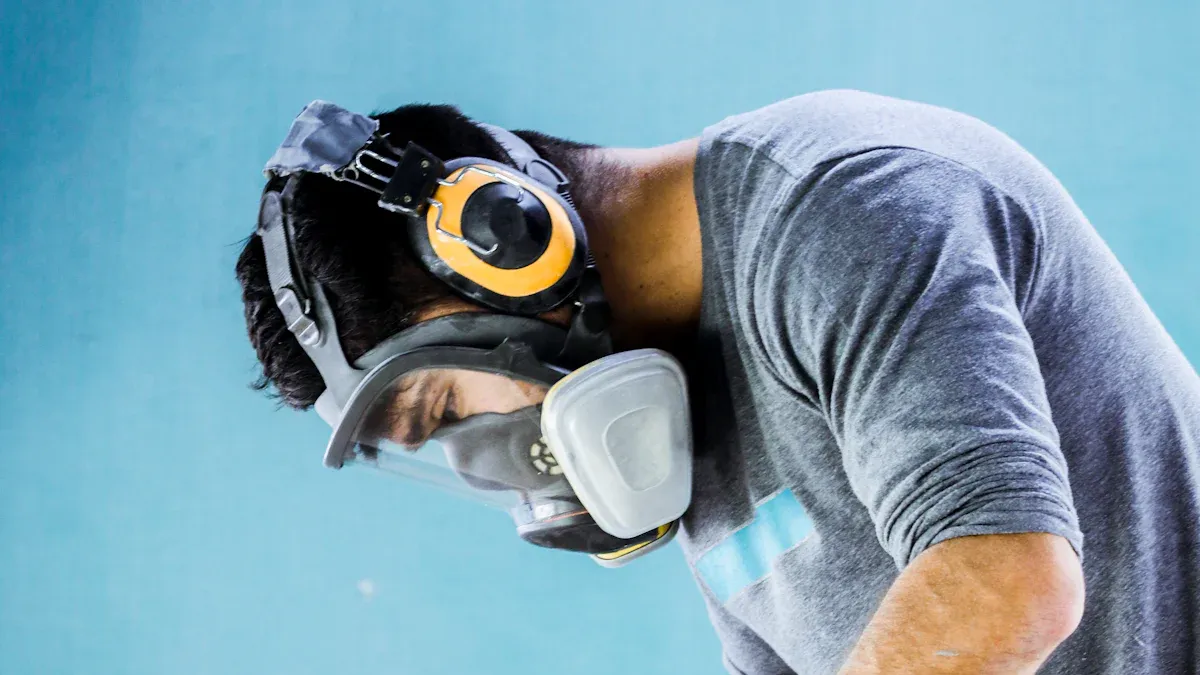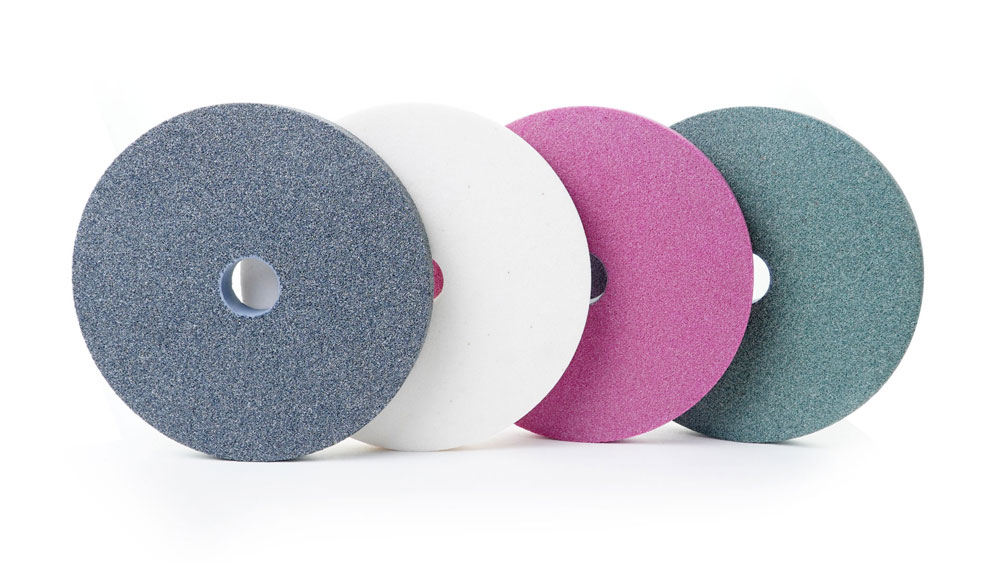Do not use a grinding wheel that is damaged or cracked. You can get hurt badly if you do not follow this rule. Grinding wheel safety keeps you and your coworkers safe. If a wheel breaks, pieces can fly off and hurt people. These injuries can be very serious. They include:
Losing fingers
Damage to your eyes
Injuries to your feet and head
Burns from flying sparks
Always look at your wheel before you use it and wear the right PPE. Doing these things makes your workplace safer and helps stop accidents.
Key Takeaways
Always check grinding wheels for cracks or damage before using them. This helps stop serious injuries from a broken wheel.
Use the right guards and set the work rest correctly. This keeps your hands and body safe while you grind.
Wear the correct personal protective equipment. Use safety glasses, face shields, hearing protection, gloves, and strong clothes. These protect you from sparks, flying pieces, and loud sounds.
Use the grinder safely by standing to the side. Press gently and do not force the wheel. This helps stop accidents and keeps the wheel from breaking.
Know what to do fast if the wheel breaks. Stop the grinder, move away, and tell someone about the accident. This keeps everyone safe.
Grinding Wheel Safety Checks

Wheel Inspection
You must inspect every grinding wheel before you use it. This step is one of the most important dos for grinding wheel safety. If you skip inspection, you risk injury and damage in your workplace. Follow these steps to check for cracks or damage:
Look at the wheel under good lighting. Search for cracks, chips, or uneven wear.
Check the label. Make sure the wheel matches your grinder’s specifications, including diameter, grit size, and maximum operating speed.
Perform a ring test. Remove and clean the wheel. Tap it gently with a wooden mallet or non-metallic object at different spots around the edge.
Listen for a clear ringing sound. If you hear a dull or dead sound, the wheel may have cracks. Do not use it.
Rotate the wheel by 45 degrees and repeat the tap test. Check for a consistent sound all around.
Tip: The ring test is a simple and effective way to detect cracks. Safety standards like OSHA and ANSI B7.1 recommend this test before mounting any abrasive wheel. If you find any damage, discard the wheel right away.
Guard and Rest Setup
Grinding wheel safety depends on using the proper guard and adjusting the work rest. Guards protect you from flying fragments and sparks. ANSI B7.1 wheel guard standards require that guards cover the spindle end, nut, and flange projections. Guards must be strong and mounted correctly.
Requirement Aspect | Details |
|---|---|
Guard Design | Must meet ANSI B7.1-1978 specifications |
Protection Hood | Covers spindle end, nut, flange; mounted for alignment; strong fastenings |
Work Rests | Adjustable; max opening 1/8 inch; secured after adjustment |
Cup Wheel Protection | Band or revolving cup guards; clearance ≤ 1/16 inch |
Adjust the work rest before you start grinding. Keep the distance between the work rest and the wheel at 1/8 inch or less. This measure prevents your hands or the workpiece from getting caught, which could break the wheel and cause serious injury. Always secure the work rest after you adjust it. Never adjust the rest while the wheel is moving.
Note: Regular checks and adjustments are safety measures that help keep your workplace safe. Replace any damaged or missing guards right away.
Speed and Mounting
Check the grinder’s speed before you mount a wheel. Never operate a wheel above its maximum operating speed. High-speed grinders (around 3600 RPM) create more heat and stress. Slow-speed grinders (around 1800 RPM) run smoother and quieter. Always follow the manufacturer’s recommendations for speed.
Mount the wheel carefully. Clean the flanges and mounting surfaces. Make sure there are no burrs or foreign objects. Incorrect mounting can cause pressure or tension, leading to wheel breakage. Improper mounting also causes vibrations and instability, which can result in uneven grinding and extra stress on the grinder. Many workplace accidents happen because of poor mounting practices.
Always run a new or long-unused wheel in a protected area for at least one minute before use. This step helps you spot defects early and keeps your workplace safe.
Grinding wheel safety rules require you to follow these measures every time you use a grinder. When you use the proper guard, check the work rest, and mount the wheel correctly, you protect yourself and others in your workplace.
Personal Protective Equipment

Eye and Face Protection
You need strong eye and face protection when you use a grinding wheel. Flying debris, sparks, and dust can cause serious injuries. OSHA and ANSI standards require you to wear safety glasses with side shields or goggles marked with Z87.1. For extra protection, wear a face shield over your safety glasses. This combination guards your eyes and face from all directions. Face shields cover your face and neck, blocking large fragments and sparks. Safety goggles seal around your eyes, keeping out dust and small particles. Indirect-vent goggles help reduce fogging, while non-vented goggles work best for fine dust. If you wear prescription glasses, use protective eyewear that fits over them or has your prescription built in. Always check that your PPE fits well and feels comfortable. Good fit helps you keep your gear on during the whole job.
Safety experts say that using both face shields and goggles can prevent up to 90% of eye injuries during grinding. Make sure you train yourself and others on how to use this equipment.
Hearing and Gloves
Grinding wheels make a lot of noise. You should wear ear plugs or ear muffs to protect your hearing. OSHA rules say you must use hearing protection if noise levels reach 85 decibels or more. Most grinding operations go above this level. Ear plugs fit inside your ears, while ear muffs cover your ears from the outside. Both types help lower the risk of hearing loss.
For your hands, choose gloves made from leather or other abrasion-resistant materials. Gloves should fit well and not be too loose or too tight. Some gloves have cut and heat-resistant linings, like Kevlar, for extra safety. Good gloves protect your hands from sparks, sharp edges, and heat. Do not use gloves that can get caught in moving parts.
Glove Type | Features | Best Use |
|---|---|---|
Leather | Durable, abrasion-resistant | General grinding |
Kevlar-lined | Cut and heat resistance | Heavy-duty grinding |
Form-fitting | Better grip, less snag risk | Precision work |
Clothing and Footwear
Wear long-sleeved shirts and pants made from cotton or leather. These materials do not catch fire easily and protect your skin from sparks. Avoid loose clothing, ties, or jewelry. Loose items can get caught in the wheel and cause injury. Use a leather apron for extra protection on your chest and legs. In some workplaces, flame-resistant coveralls give full body protection.
For your feet, wear sturdy, closed-toe shoes or boots. Leather boots work best because they protect against falling objects and hot fragments. Never wear sandals or open shoes when grinding.
Protective measures like proper clothing and footwear help prevent burns, cuts, and other injuries. Always check your gear before you start work.
Safe Operation
Starting and Running
You must follow safe steps every time you start and run a grinding wheel. Begin by wearing safety goggles and a face shield. Check that the grinder is off before you turn it on. Adjust the work rest so it sits no more than 1/8 inch from the wheel. Make sure both flanges are present and equal in size. Use washers between the flange and wheel. Confirm the safety guard covers the spindle end, nut, and flange projections. Adjust the tongue guard so the gap does not exceed 1/4 inch. Stand to the side when you turn on the power. Let the wheel run for at least 60 seconds in a protected area. Watch for vibration or strange sounds. Hold the workpiece firmly and apply it gradually. Do not grind on the side of the wheel unless it is designed for that purpose. Turn off the power when you finish or leave the wheel.
Tip: Always inspect new wheels and perform a ring test before mounting. Dress newly mounted wheels to ensure smooth operation.
Position and Handling
Your position matters when you use a grinding wheel. Never stand directly in the rotational plane of the wheel. This spot is the most dangerous if the wheel breaks. Stand to the side so debris moves away from you. Use the guard to protect yourself. Do not remove or change the guard. Hold the workpiece with a firm grip. Support it properly to prevent crashes. Keep your workspace clean and free of trip hazards. Avoid distractions and stay focused. Handle wheels gently and store them in dry, safe places. Always check for cracks before use.
Note: Training helps you learn safe mounting, dressing, and operating techniques. Ask for help if you do not know how to use the grinder.
Force and Pressure
Apply only moderate pressure when grinding. Do not force the wheel. Excessive pressure can cause the wheel to break or jam. This can lead to kickback and loss of control. You risk cuts, burns, or eye injuries if you push too hard. Tighten mounting screws just enough to hold the wheel firmly. Use a torque wrench for best results.
Action | Recommendation |
|---|---|
Mounting pressure | Tighten just enough |
Grinding pressure | Use gentle contact |
Clamping force | Avoid over-tightening |
Remember: Gentle, steady pressure keeps you safe and helps the wheel last longer. Always read and follow the instructions marked on the wheel.
Common Mistakes
Wrong Wheel Use
You need to pick the right grinding wheel for each job. Many people make mistakes by using a wheel that does not fit the material or the finish they want. Here are some mistakes you should not make:
Choose the correct grit size. Coarse grit is for rough work. Fine grit makes the surface smooth.
Check the wheel’s speed rating. High-speed grinders need wheels that can handle more heat and friction.
Think about how long the wheel will last. For big jobs, use wheels that last longer.
Make sure the wheel can handle cooling. Good thermal conductivity stops overheating.
If you use the wrong wheel, you can get burns or cuts. The wheel might break and send pieces flying. Sparks and debris can hurt you or others. You might also get a bad finish, wear out the wheel fast, or damage your workpiece. These mistakes can cause delays, cost more money, and make things unsafe.
Tip: Always follow the dos and don’ts for grinding wheel safety. Picking the right wheel keeps you safe and helps you do better work.
Excessive Pressure
Using too much pressure is a common mistake. You may think pushing harder will finish the job faster, but it causes problems. Signs of too much pressure include:
The grinding disc wears out quickly
The material comes off unevenly
The wheel gets too hot and may crack
The wheel is more likely to break
You should use gentle, steady pressure. Uneven force can make the wheel shake and wear out faster. Always clamp your workpiece tight and check for vibration before starting. Keep a grinding angle of 25 to 30 degrees for best results. Use just enough pressure to keep the wheel moving smoothly.
Problem | Cause | Solution |
|---|---|---|
Uneven wheel wear | Too much pressure | Use gentle contact |
Overheating | Too much force | Use less pressure |
Wheel breakage | Overloading | Use even force |
Ignoring Sounds or Vibrations
Strange sounds or vibrations mean something is wrong. Grinding, squealing, or rattling noises show the wheel may be worn or not balanced. Too much vibration makes the grinder hard to control and can cause accidents. If you ignore these signs, the wheel could break suddenly. Pieces can fly off and hurt someone badly.
You should check and change the wheel if you hear odd sounds or feel shaking. Worn wheels can cause kickback, bad grinding, and damage the grinder. More vibration also means poor finishes and higher repair costs.
Note: Always listen to your grinder and notice how it feels. Acting fast can stop accidents and keep everyone safe.
Emergency Actions
Wheel Breakage
Grinding wheels can break without warning. You must know what to do if this happens. Broken wheels can cause serious injuries. Pieces may fly across the room and hit you or others. If you see a wheel break, move away from the grinder right away. Do not try to catch or stop flying fragments. Alert others nearby so they can stay safe. Turn off the grinder as soon as you can. Check yourself and coworkers for cuts, burns, or other wounds. Use first aid if needed. Always report the breakage to your supervisor. You help prevent future accidents when you share what happened.
If you notice cracks or hear strange sounds before a break, stop using the grinder. Inspect the wheel and replace it if needed. Safety checks before each use lower the risk of wheel breakage.
Incident Response
You must act quickly if an accident happens during grinding. Follow these steps to keep everyone safe:
Stop the grinder immediately if you see a problem or accident.
Report the incident to your supervisor right away.
Seek first aid or medical help if you or someone else is hurt.
Review what happened after the incident. Look for ways to improve safety and prevent future accidents.
You should always know where the first aid kit is located. Learn how to use emergency equipment before you start work. Stay calm and help others if they need assistance. After the incident, talk with your team about what went wrong. Use this information to make your workplace safer.
Step | What You Should Do |
|---|---|
Stop the grinder | Prevent further harm |
Report the incident | Get help and document the accident |
Seek medical help | Treat injuries quickly |
Review procedures | Improve safety for next time |
Quick action can save lives and reduce harm. Always follow your workplace emergency plan.
When you follow grinding wheel safety rules, you keep everyone safe. Always pay attention and wear the right PPE. Make a short checklist before you start:
Look for cracks or damage on the wheels.
Make sure guards and work rests are in place.
Check the machine speed and how the wheel is mounted.
Try out the emergency stop to see if it works.
Look at the ventilation and coolant systems.
Put safety first at work. Tell someone if you see a danger and talk with others to help keep everyone safe.
FAQ
What should you do if you find a crack in your grinding wheel?
Stop using the wheel right away. Remove it from the grinder. Tell your supervisor or manager. Replace the wheel with a new one. Cracked wheels can break and cause injuries.
How often should you check your grinding wheel for damage?
Check your grinding wheel before every use. Look for cracks, chips, or signs of wear. Regular checks help you stay safe and prevent accidents.
Can you use gloves while operating a grinder?
You should wear snug-fitting gloves made for grinding. Loose gloves can get caught in moving parts. Choose gloves that protect your hands from sparks and sharp edges.
Tip: Always check your gloves for damage before you start working.
What PPE do you need for grinding wheel safety?
You need safety glasses with side shields, a face shield, hearing protection, and sturdy shoes. Wear long sleeves and pants made from cotton or leather. This gear protects you from flying debris and sparks.
PPE Item | Purpose |
|---|---|
Safety Glasses | Protect your eyes |
Face Shield | Guard your face |
Ear Protection | Save your hearing |
Sturdy Shoes | Shield your feet |
See Also
Safe And Efficient Ways To Operate A Dremel Grinder
Different Grinding Wheel Varieties And Their Common Uses
Selecting The Best Grinding Wheel For Your Circular Saw

